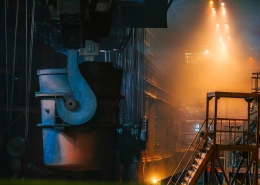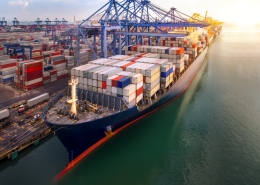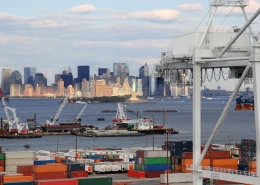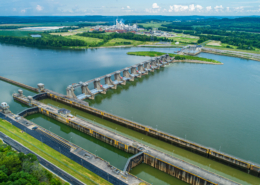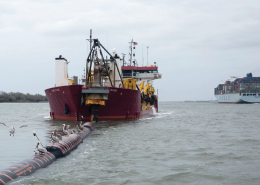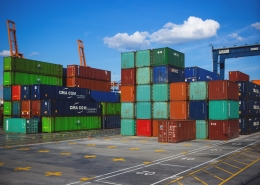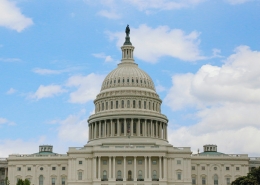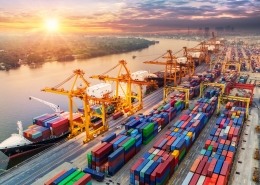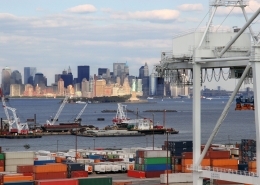Last week, Proterra Inc. a large manufacturer of electric mass transit buses, filed for chapter 11 bankruptcy protections. Here’s everything you need to know:
Proterra Inc, founded in 2004, was the first to introduce zero-emission electric transit busses to U.S. markets in 2010, and has since expanded their business to cover not only the manufacture of electric transit buses, but also the manufacture of heavy-duty vehicle charging systems and batteries (most frequently deployed in electric school buses). Proterra delivered 199 transit buses in 2022, with many orders in the pipeline in the upcoming years. This does not sound like a company on the brink of bankruptcy.
Proterra’s three business lines are all interconnected. Proterra Transit is an original equipment manufacturer of electric transit buses, Proterra Powered produces battery systems and electrification solutions, and Proterra Energy produces high-power charging solutions and software services. Each of the business lines were at different levels of profitability, with Transit being the most unprofitable.
In the spring of 2023, Proterra attempted to sell Transit in order to get the capital required to grow its other two lines of business into profitability. According to the bankruptcy filing, 26 potential buyers showed interest, however, none of the interested parties submitted a potential bid for an out-of-court purchase for Transit. Potential investors were interested in Powered and Energy, but ultimately saw the structural impediments (i.e. the interconnectedness of the three business lines under one holding company, Proterra Inc.) as too great a liability.
Why is Proterra Transit unprofitable?
According to an Eno analysis of the Federal Transit Administration’s National Transit Database (NTD), Proterra built 91 vehicles for 17 public transit customers in 2020, an average of about 5 vehicles per customer—a relatively low number. As with most manufacturing, larger scale production allows for some cost efficiencies and is a potential path to profitability. New Flyer, for example, manufactured 1,096 vehicles for 74 customers in 2020, an average of about 15 vehicles per customer, likely allowing for much greater cost efficiencies (New Flyer’s top 5 customers received delivery of more than 50 vehicles). While the “build year” data is not a complete picture of contract size (they often span multiple years), and transit bus OEMs serve customers that are not mandatory reporters to the NTD, it offers a snapshot into the general size of these orders.
Even more detrimental for Proterra is not their market penetration, but the number of vehicles purchased by each customer. Transit industry procurements in the United States are highly customized, with no two orders being the same. This customization prevents Proterra for accessing cost efficiencies because they cannot make the same bus for multiple customers, and the customers they do have don’t place large orders.
Pandemic supply chain constraints have also kept Transit from being profitable. When transit agencies order a bus, the OEM receives payment after delivery and testing. When component availability delays production, the payment is delayed, forcing the OEM to overextend itself and increasing the upfront investment needed. Additionally, delays can result in liquidated damages for contracts with both their vendors and customers, further increasing costs.
An increased need for upfront investment can also mean more debt. In high inflationary periods like the past two years, carrying debt becomes much more burdensome due to increased interest rates that are implemented in reaction to this inflation. When your business model is based on up front capital investment that is only recouped upon delivery of a final transit vehicle, sometimes 18 months after that capital investment on the vehicle begins, interest rates can be a big threat to long term viability.
What’s next for Proterra and transit bus manufacture in the United States?
Proterra likely isn’t going anywhere. The bankruptcy filing will allow Proterra to restructure, potentially selling some of its ventures. If Proterra ceases further operations (which again is unlikely), other transit bus OEMs will remain in U.S. markets, including New Flyer and Gillig. However, the number of transit bus OEMs in U.S. markets is dwindling. In December 2019, Congress enacted a law banning Chinese-owned or Chinese-domiciled rolling stock manufacturers from receiving federal mass transit funds for new procurements. When this law took effect two years later, the Federal Transit Administration banned the use of its funds to purchase transit vehicles from BYD, ruling that BYD fell afoul of the new law.
In June 2023, Nova Bus, a Volvo subsidiary, announced they would no longer produce transit buses for U.S. markets after 2025, citing lack of profitability and years of financial loses. A thoughtful reader might infer that Nova Bus was facing many of the same challenges as Proterra. Looking again at NTD data, Eno found that in 2020 Nova Bus manufactured 128 vehicles for 10 customers, an average of about 13 vehicles per customer (6 of the customers received delivery of 10 or more buses). This means larger orders spanning fewer customers, which would have steered Nova Bus closer to profitability. Additionally, Nova Bus manufactured its U.S. buses in Plattsburgh, NY, making it the only transit bus company that complied with a New York State requirement that vehicles procured using state money must be manufactured in-state. This practically guaranteed the business of the largest transit bus operator in the country, the New York MTA, and Nova Bus was still not profitable.
Another advantage that Nova Bus had (that Proterra did not) is a large and profitable parent company, Volvo, that could support it during times of unprofitability. Even with these two advantages, Nova Bus still could not succeed in U.S. markets. This begs the question: Has transit bus procurement in the United States – or at least electric transit bus procurement – become such a quagmire that transit bus manufacture isn’t a viable business venture? Are the remaining few transit bus OEMs in the United States doomed to meet the same fate?
One thing is clear: transit e-bus procurement as it stands today in the United States is unsustainable. Over-customization during the procurement of transit buses was a contributing factor to the Proterra bankruptcy, and likely a contributing factor to Nova Bus’s abandonment of its U.S. operations. In our next issue, ETW will go more in-depth on the problem of over customization and explore potential solutions.

